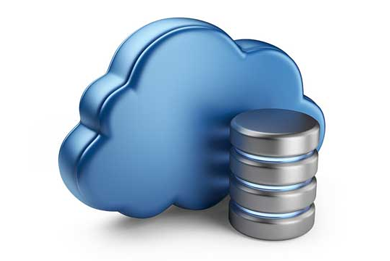
Selamat Datang Ke Cloud Technology!
Apakah yang dimaksudkan dengan cloud computing (pengkomputeran awan)?
Pengkomputeran awan ialah pembangunan dan penggunaan teknologi komputer (“pengkomputeran”) berasaskan internet (“awan”).Mengikut konsep, ia adalah suatu anjakan paradigma di mana perincian diabstrakkan daripada pengguna yang tidak lagi perlukan pengetahuan, kepakaran dalam, mahupun mengawal infrastruktur teknologi “di dalam awan” yang menyokong mereka. Ia selalunya melibatkan peruntukan sumber-sumber yang boleh diskalakan secara dinamik dan sering kali dimayakan sebagai satu perkhidmatan di Internet.
Istilah awan digunakan sebagai satu metafora bagi Internet, berdasarkan cara Internet digambarkan di dalam gambar rajah rangkaian komputer dan merupakan pengabstrakan bagi infrastruktur yang disembunyikan di sebaliknya.Perkhidmatan pengkomputeran awan biasa membekalkan penggunaan perniagaan lazim di atas talian yang dicapai melalui pelayar web, sementara perisian dan datanya tersimpan di pelayannya.
Perkhidmatan-perkhidmatan ini dibahagikan kepada kategori-kategori berikut: Perisian sebagai sebuah Perkhidmatan (SaaS), Pengkomputeran Utiliti, Perkhidmatan Web, Pelantar sebagai sebuah Perkhidmatan (PaaS), Pembekal Khidmat Terurus (MSP), Perdagangan Perkhidmatan, dan Integrasi Internet.
Klik untuk dapatkan Dropbox secara Percuma!
Apakah Dropbox itu?
Dropbox adalah tempat anda menyimpan semua foto, dokumen, video, dan file lain. Dropbox membolehkan anda mengakses file di mana saja dan mudah memberikan kepada ke orang lain.
Akses file anda di mana pun anda berada
Semua file yang anda simpan ke Dropbox akan automatik muncul ke semua komputer, ponsel, tablet dan di Web Dropbox anda. Tidak perlu lagi mengirimkan email buat diri sendiri atau risau dengan kerosakan hard drive. Simpan file anda di Dropbox dan setiap saat Anda boleh mengaksesnya — di mana pun anda berada. Bahkan apabila tidak sengaja menumpahkan kopi ke laptop, jangan takut! File anda selamat di dropbox.
File anda selamat!
Semua file yang simpan di dropbox bersifat peribadi, dan selamat dikawal olehanda. Dropbox menyimpan file dengan enkripsi 256-bit AES. Anda juga dapat menambahkan lapisan perlindungan tambahan ke akaun anda dengan verifikasi dua langkah sehingga tidak perlu lagi risau tentang keselamatan file anda yang paling berharga.
Sertai Whatsapp Group Penerangan
Klik untuk sertai group penerangan
Why We Use Cloud Technology?
Businesses are being empowered to implement all their email and application needs using a simple web browser portal on any device, anyplace. Firms can order and immediately utilise Hosted Exchange Mailbox, Hosted SharePoint, VoIP Phone Systems or a complete Virtual Desktop running Windows and Office.
Steven Fenn, CEO stated, “This is a remarkable new servicing that turns the Cloud Computing market upside down. Whilst first generation Cloud hosting services have needed consultation with sales and engineering staff, V-Cloud Professional gives the entire power of our cloud infrastructure over to the user. This permits businesses who are straining to conform to the pace and dynamism of business nowadays to utilise highly resilient virtual machines for their workforce, and creates a new era of flexibility.”
Care of in-house email and application servers can be daunting and very expensive. But with hosted email and apps the whole process grows effortless, so that all you have to do is login Psychology Articles, customise and start. You also save money as you only need to pay for the resources that you actually want.
What Is Cloud Storage?
Cloud storage is a model of data storage in which the digital data is stored in logical pools, the physical storage spans multiple servers (and often locations), and the physical environment is typically owned and managed by a hosting company. These cloud storage providers are responsible for keeping the data available and accessible, and the physical environment protected and running. People and organizations buy or lease storage capacity from the providers to store user, organization, or application data.
Cloud storage services may be accessed through a co-located cloud computer service, a web service application programming interface (API) or by applications that utilize the API, such as cloud desktop storage, a cloud storage gateway or Web-based content management systems.
instant elasticity and scalability, multi-tenancy, and metered resources. Cloud storage services can be utilized from an off-premises service (Amazon S3) or deployed on-premises (ViON Capacity Services).
Cloud storage typically refers to a hosted object storage service, but the term has broadened to include other types of data storage that are now available as a service, like block storage.
Object storage services like Amazon S3 and Microsoft Azure Storage, object storage software like Openstack Swift, object storage systems like EMC Atmos, EMC ECS and Hitachi Content Platform, and distributed storage research projects like OceanStore and VISION Cloud are all examples of storage that can be hosted and deployed with cloud storage characteristics.
The Benefits Of Cloud Storage
Cloud storage is:
- Made up of many distributed resources, but still acts as one, either in a federated or a cooperative storage cloud architecture
- Highly fault tolerant through redundancy and distribution of data
- Highly durable through the creation of versioned copies
- Typically eventually consistent with regard to data replicas
- Companies need only pay for the storage they actually use, typically an average of consumption during a month. This does not mean that cloud storage is less expensive, only that it incurs operating expenses rather than capital expenses.
Businesses using cloud storage can cut their energy consumption by up to 70% making them a more green business. Also at the vendor level they are dealing with higher levels of energy so they will be more equipped with managing it in order to keep their own costs down as well.
Organizations can choose between off-premises and on-premises cloud storage options, or a mixture of the two options, depending on relevant decision criteria that is complementary to initial direct cost savings potential; for instance, continuity of operations (COOP), disaster recovery (DR), security (PII, HIPAA, SARBOX, IA/CND), and records retention laws, regulations, and policies.
Storage availability and data protection is intrinsic to object storage architecture, so depending on the application, the additional technology, effort and cost to add availability and protection can be eliminated.
Storage maintenance tasks, such as purchasing additional storage capacity, are offloaded to the responsibility of a service provider.
What Else On Cloud Storage?
Cloud storage provides users with immediate access to a broad range of resources and applications hosted in the infrastructure of another organization via a web service interface.
Cloud storage can be used for copying virtual machine images from the cloud to on-premises locations or to import a virtual machine image from an on-premises location to the cloud image library. In addition, cloud storage can be used to move virtual machine images between user accounts or between data centers.
Cloud storage can be used as natural disaster proof backup, as normally there are 2 or 3 different backup servers located in different places around the globe.
With cloud computing, both computing and storage capacity are delivered to a wide range of clientele. It entrusts certain services with a user’s software, information and calculations over a network.
Cloud computing falls into three categories:
Infrastructure as a Service (IaaS),
Software as a Service (SaaS), and
Platform as a Service (PaaS).
When they choose IaaS, users rent servers made available by at least one cloud provider. With PaaS, they rent both servers and the software to be used in them. With SaaS, users also have access to databases and application software, and the cloud providers control the platforms and the infrastructure on which those applications operate.
The end users can access these applications via a web browser or lightweight mobile or desktop app, and the user’s information and business data are stored at a remote location on servers. Advocates of the service maintain that with cloud computing, companies can start using their applications more quickly with better content management and reduced maintenance, and that IT can easily adjust available resources to meet ever-changing business requirements.
Cloud computing possesses these basic characteristics:
Accessibility to software enabling machines to interact with it, just as human belongs interact with computers.
The ability of users to access a system via a web browser irrespective of the device they use or their or their location. This is possible because the infrastructure, which is off-site, is accessed through the Internet.
Because of virtualization technology, servers and storage devices can be shared and their utilization can be increased. In addition, applications can be transferred easily from server to server.
Resources and expenses are shared by a large pool of end-recipients.
Because multiple sights are used, reliability is enhanced, making good cloud computing usable for disaster recovery and business continuity.
Security is usually as good as, or perhaps even excelsArticle Search, that of other systems because providers can use some of their resources in solving security problems that many end-users cannot afford.
Cloud computing applications are easy to maintain because they can be accessed from various locations and are not installed in every user’s computer.








